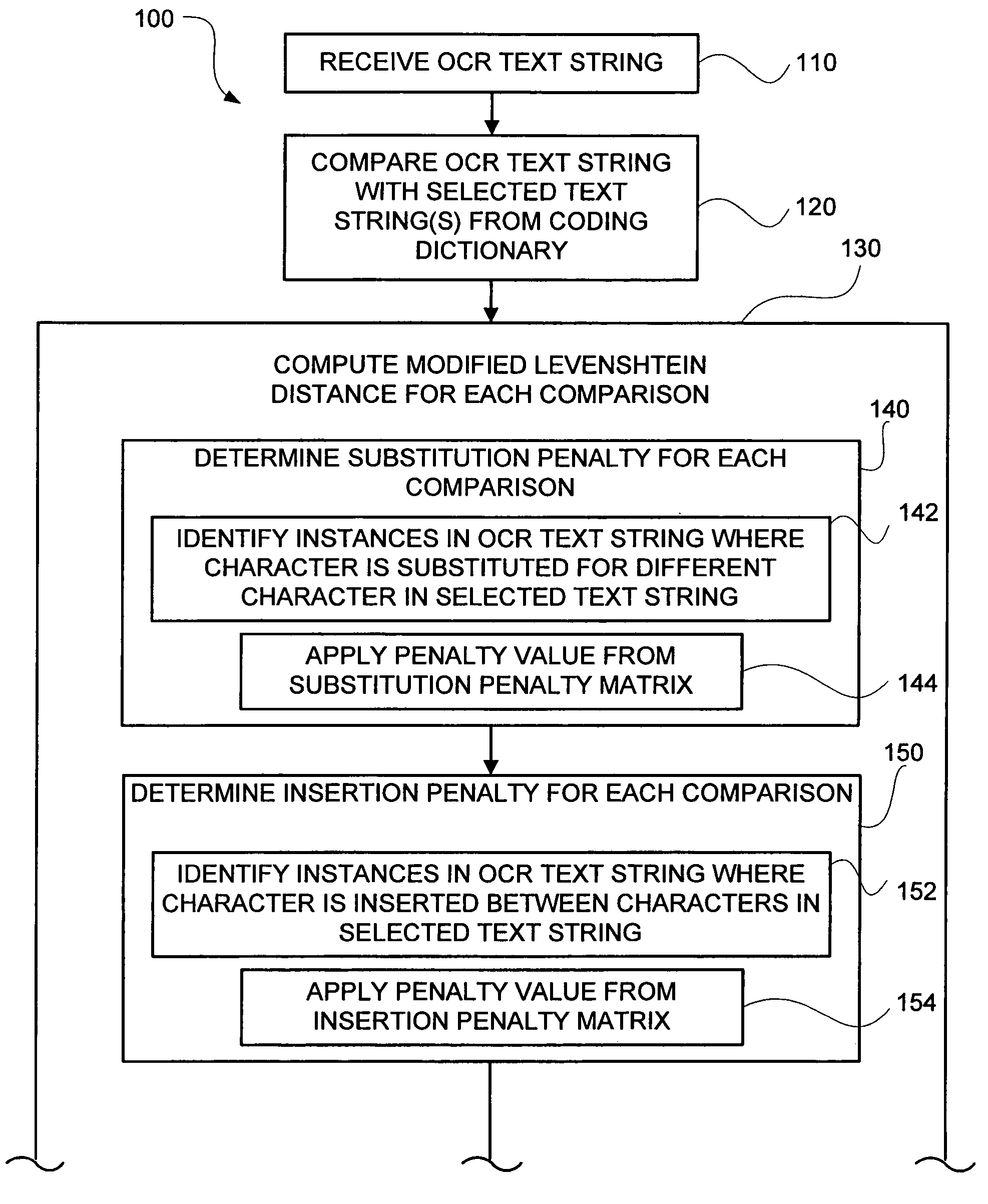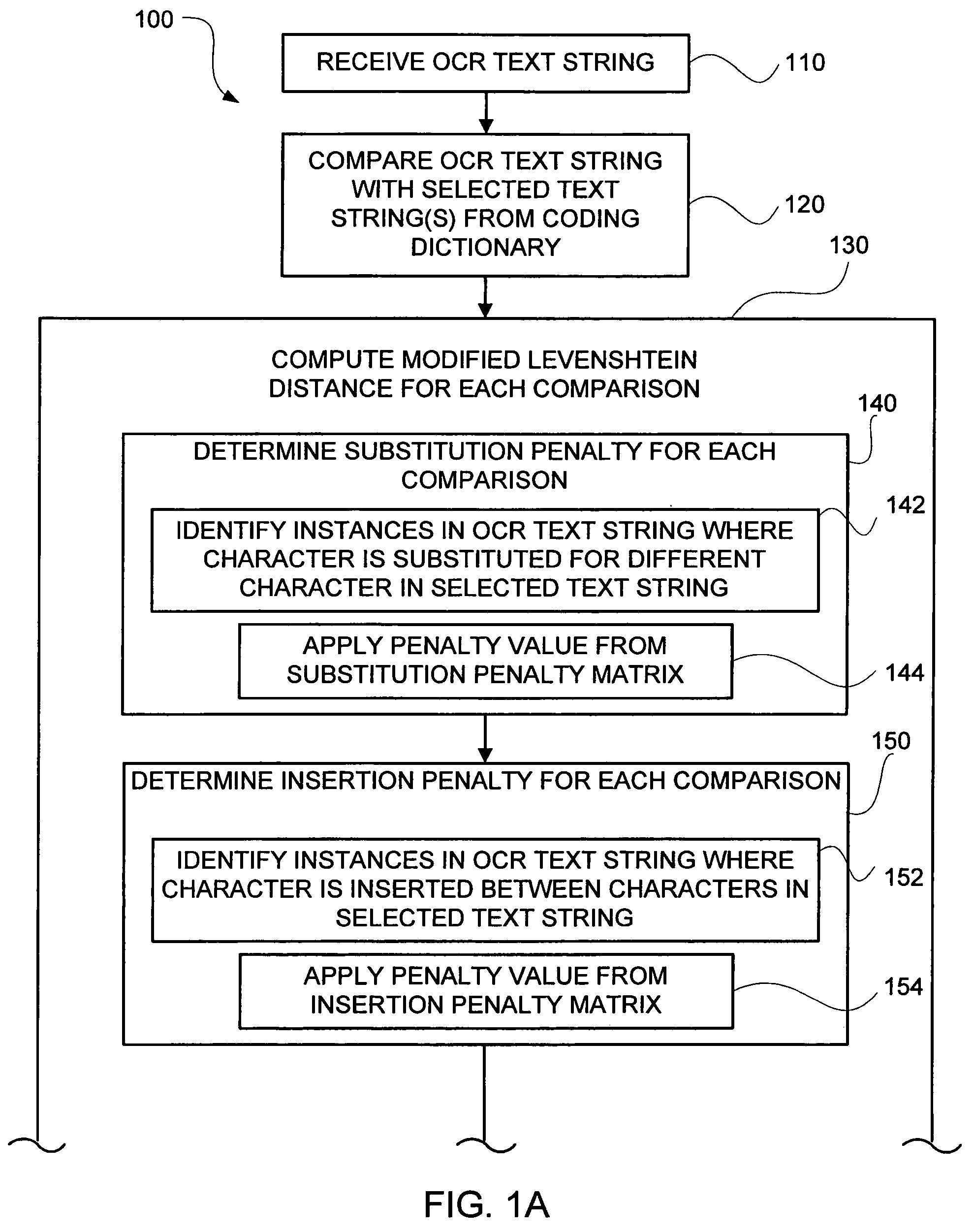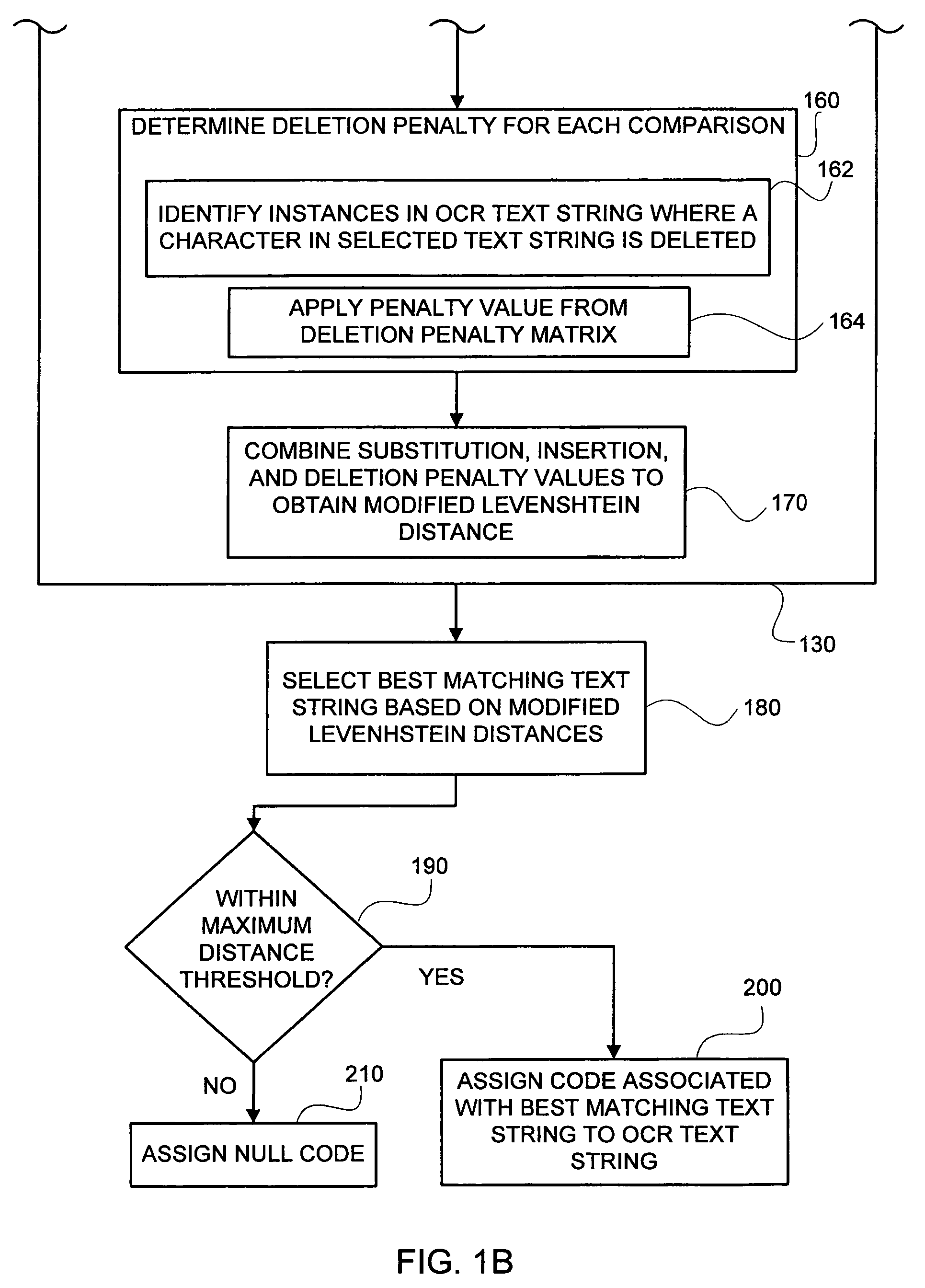Modified Levenshtein distance algorithm for coding
a distance algorithm and coding technology, applied in the field of optical character recognition, can solve the problems of inaccurate levenshtein distance, complex mapping of ocr text strings to appropriate text strings included in the coding dictionary using the lda, and inability to accurately match ocr text strings to appropriate text strings,
- Summary
- Abstract
- Description
- Claims
- Application Information
AI Technical Summary
Benefits of technology
Problems solved by technology
Method used
Image
Examples
Embodiment Construction
[0025]FIGS. 1A-1B show the steps included in one embodiment of a method (100) of mapping an OCR text string to a code associated with one or more text strings included in a coding dictionary. The OCR text string mapping method (100) illustrated in FIGS. 1A-1B is useful in a number of contexts including, for example, in categorizing information included in a document (e.g., a census survey form). For example, the following responses on a census survey form regarding a person's residence city are spelled differently but should map to the same category in the coding dictionary:
[0026]
Exemplary OCR Text StringExemplary Associated CodeGREENWOOD VILLAGE99GREENWOOD VLG.99GREEN. VILLAGE99GREEN. VLG.99
The exemplary code(s) illustrated above are numeric, but the code(s) may, in general, be numeric, alpha, or alpha-numeric code(s).
[0027]When conducting a large survey (e.g., a population census), it is not efficient to map responses on the census survey forms to codes in the coding dictionary by...
PUM
 Login to View More
Login to View More Abstract
Description
Claims
Application Information
 Login to View More
Login to View More - R&D Engineer
- R&D Manager
- IP Professional
- Industry Leading Data Capabilities
- Powerful AI technology
- Patent DNA Extraction
Browse by: Latest US Patents, China's latest patents, Technical Efficacy Thesaurus, Application Domain, Technology Topic, Popular Technical Reports.
© 2024 PatSnap. All rights reserved.Legal|Privacy policy|Modern Slavery Act Transparency Statement|Sitemap|About US| Contact US: help@patsnap.com










